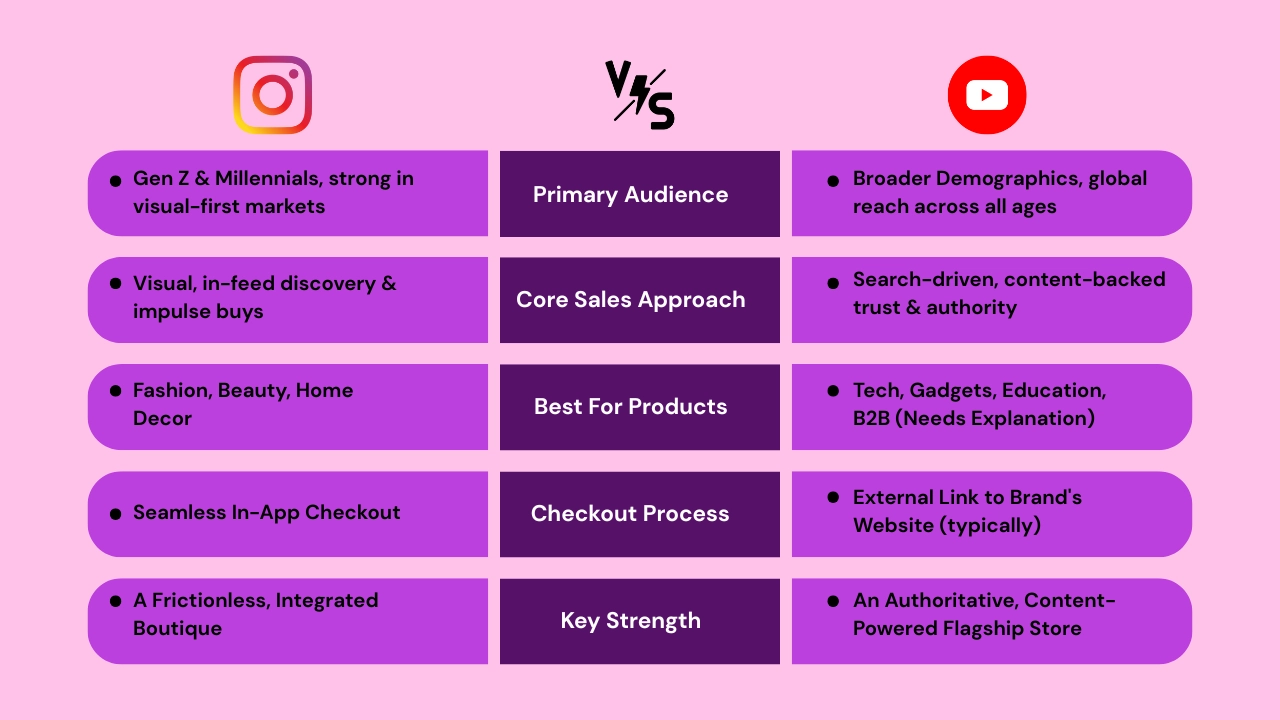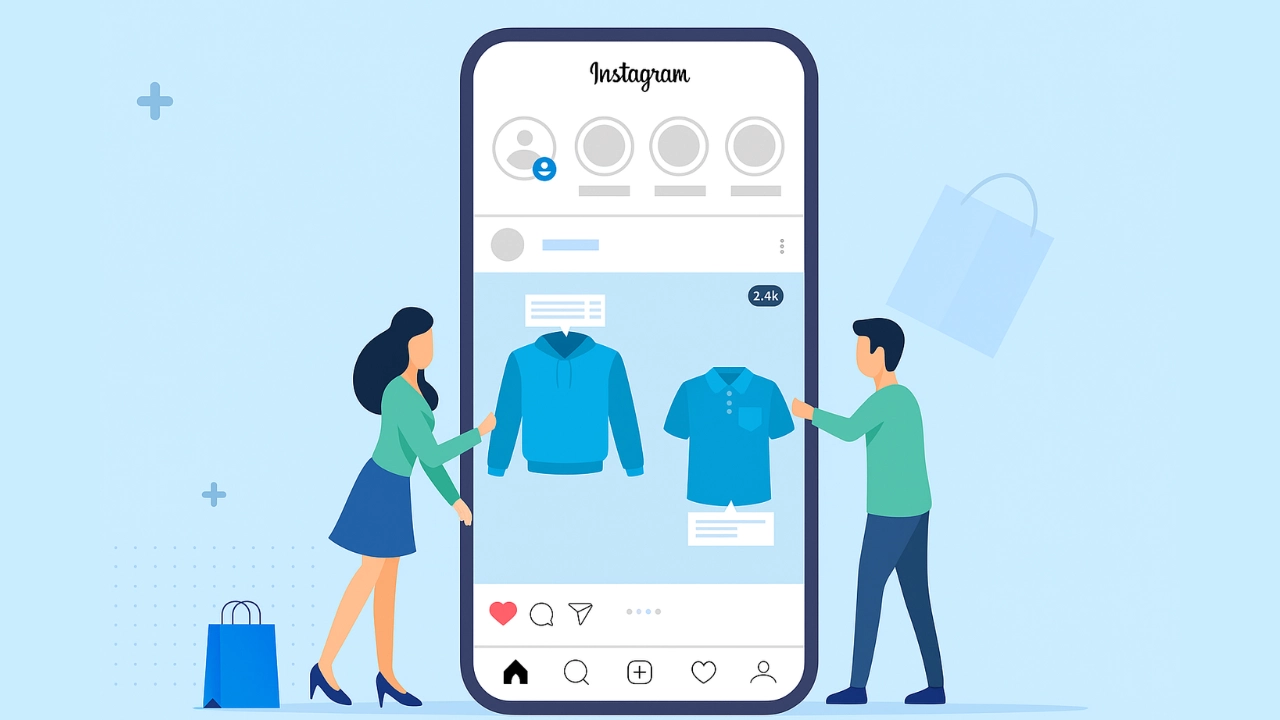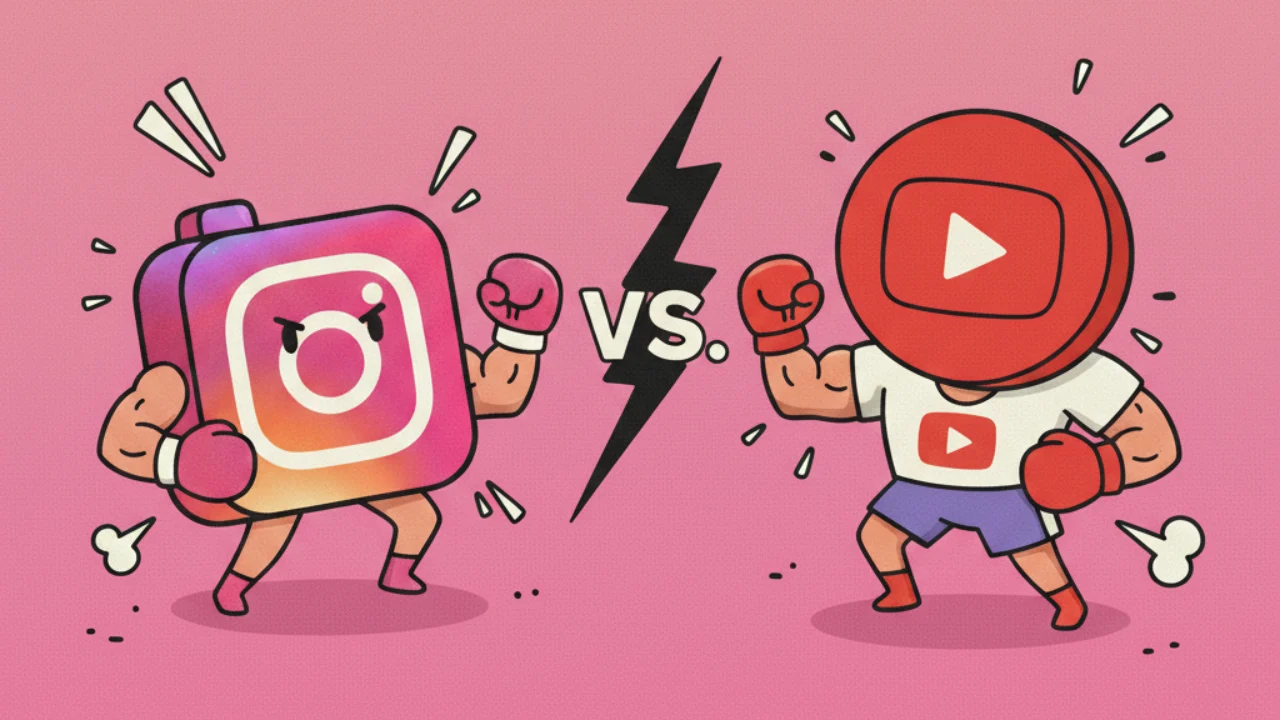Introduction: The New Frontier of Digital Commerce
The world of e-commerce has expanded. In 2025, your storefront is everywhere—in a video feed, a live stream, or a trusted creator’s review. In fact, global social commerce revenue is set to soar past $2 trillion by 2026. This massive shift is turning passive browsing into active buying.
At the heart of this revolution are two undisputed titans: Instagram and YouTube.
This presents a critical challenge for business leaders. For example, Instagram is a fast-paced digital marketplace. It can turn a trend into a sale in an instant. In contrast, YouTube is a trusted expert. It builds authority and helps customers make big purchase decisions.
With limited resources, the real question is simple. Where should you invest your money for the best return? This guide will break down the features and strategies of both platforms. Ultimately, it will give you a clear framework to choose the right channel, grow your brand, and drive real growth.
At-a-Glance: A Quick Comparison

Understanding Each Platform’s Philosophy
To truly master these platforms, you must first understand their core approach.
The Impulse Economy: Instagram is built for spontaneous discovery. Its entire sales system works to shorten the path from seeing a product to buying it. Because of this, the platform thrives on visual stories and fast-moving trends, a key reason for some Instagram stores outperforms.
For brands, success means stopping a user’s scroll with something powerful. The main goal is to create a frictionless path from a 30-second Reel to a finished order. In short, you capture the customer in the moment.
The Authority Economy: YouTube, above all, is a search engine. Users actively look for answers and expert advice. Therefore, selling on YouTube is built on a foundation of trust.
A brand earns a sale by providing real value, not by interrupting. The platform is designed for the “considered purchase.” For example, a customer might watch a 15-minute review before buying an expensive item. Your goal is to be the most credible answer to their problem.
Deep Dive: Audience & User Mindset
Who Are You Talking To?
On Instagram, you primarily talk to a younger, mobile-first audience. Gen Z and Millennials lead the platform. Their shopping habits depend on social proof and visual trends.
YouTube, on the other hand, has universal reach. Its audience includes all age groups and interests. This makes it a great platform for brands with wider target markets.
Decoding User Intent – The Critical Difference
A user opening Instagram is often thinking, “Show me something interesting.” They are in a passive discovery mode. Consequently, your content must grab their attention and create a need.
However, a user opening YouTube is often thinking, “How do I choose the best headphones?” They are in an active research mode. For that reason, your content must provide the best answer.
The Toolkit: Commerce Features Compared
Instagram – The Integrated Social Storefront:
Instagram has expertly woven its sales tools into the platform.

- Shopping from Everywhere: You can tag products in Reels, posts, and Stories. This makes every piece of content a potential sales opportunity.
- The Instagram Shop: This tab on your profile is your curated storefront. Here, you can group products into collections. This creates a rich browsing experience.
- In-App Checkout: This is Instagram’s superpower. It allows users to buy without leaving the app. As a result, it dramatically reduces cart abandonment.
YouTube – The Content-Powered Commerce Engine:
YouTube’s features connect your expert content directly to your products.
- The YouTube Channel Store: This feature turns your channel into a digital flagship. The “Store” tab is an “always-on” storefront on your channel’s homepage. It syncs with your e-commerce platform and gives fans a dedicated place to browse your full catalog.
- Integrated Product Displays: The platform showcases your products in multiple ways. This includes a product shelf below videos and clickable shopping buttons. These features act as direct bridges from your content to your store.
- Linking Content to Commerce: The platform’s real power is linking a product in the Store to a video that proves its value. This mix of expert content and commerce builds deep trust and can improve your product page visibility.
Challenges and Risks to Consider
No platform is perfect. Before you invest, it’s wise to understand the potential challenges.
Instagram’s Risks:
- Algorithm Dependency: Your reach is heavily tied to Instagram’s algorithm. In fact, a single update can drastically affect your visibility.
- High Content Velocity: The platform demands a constant stream of new content. This can be expensive and time-consuming.
- Selling High-Ticket Items: The platform is built for impulse buys. This makes it harder to sell expensive products that need more thought.
YouTube’s Risks:
- Higher Barrier to Entry: Producing high-quality video usually requires more time and skill than creating a Reel.
- Slower Growth Curve: Building an audience and authority on YouTube is a long-term commitment. In other words, results are not immediate.
- Negative Feedback: The platform is built for detailed reviews. Because of this, any product flaws can be heavily criticized in the comments.
Building Your 2026 E-commerce Strategy
So, where should you place your bet? The answer depends on your product and your goals.
Go All-In on Instagram Shopping if:
- Your sales model relies on visual merchandising and fast, trend-based sales. The Instagram Shop is built for this.
- Case Study Example: Think of ‘Urban Bloom,’ a fast-fashion brand. Their Instagram Shop is like a digital look-book. They use daily Reels to drive traffic to their Shop, where customers can instantly buy products.
Prioritize YouTube Shopping if:
- Your sales model requires building deep trust. The YouTube Store and its connection to expert content are perfect for this.
- Case Study Example: Now, consider ‘Innovate Tech,’ an electronics store. They use their YouTube content to show their expertise. Viewers who are convinced by a detailed review can then confidently buy from the official YouTube Store tab.
The Hybrid Platform Strategy:
The smartest brands use the unique strengths of each store to guide a customer’s journey. According to marketing studies, a multi-channel approach yields the best results.
- Top of Funnel (Discovery): Use the Instagram Shop. Your Instagram Shop is your “digital boutique.” Use it to grab immediate interest and drive quick sales.
- Mid/Bottom of Funnel (Trust): Use the YouTube Store. Your YouTube Store is your “brand flagship.” After a customer’s interest is piqued on Instagram, they often look for validation on YouTube. Therefore, your Store is the trusted destination for them to make a final, confident purchase.
Conclusion: From Views to Value
Ultimately, the debate isn’t about which platform is “better.” It’s about which sales platform is better for your business strategy. Instagram’s Shop captures the moment; YouTube’s Store captures the mission.
By understanding the unique tools of each platform, you can build a smart sales strategy. First, analyze your products. Then, understand your customer’s journey. Finally, choose the platform that helps them buy with confidence. If you do that, you won’t just increase sales. You’ll build a brand that lasts by understanding how customer behavior drives business growth.
Frequently Asked Questions (FAQ)
Q1: Do I need a lot of followers to use these store features?
Ans: No. For YouTube, you must be in the YouTube Partner Program (YPP), which has follower goals. However, for both platforms, success depends more on your content quality and community engagement.
Q2: Can I sell services, not just physical products?
Ans: It is more challenging. The native Shop and Store features are designed for physical products. However, you can still market services. You can use your content to direct users to a booking or consultation page on your website.
Q3: How do I get started with YouTube Shopping?
Ans: First, make sure your channel meets the rules (like being in the YPP). Then, you must connect a supported store (like Shopify) to your channel. You can do this through the “Shopping” tab in YouTube Studio. Once connected, your products can appear in your Store.

